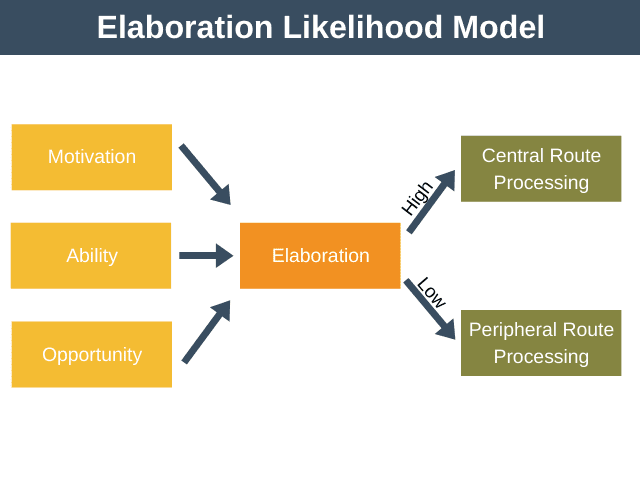Michael P. Mooney, NACM Exec. Elder
“Therefore, because we know the fear of the Lord, we try to persuade people…” (1 Cor. 5:11).
The power of suggestion is possibly one of the greatest forces influencing our society today. Entities such as the media, advertisers, and politicians use techniques like social cognition to better understand populations. Afterward, they form strategies to reach people with their messages. This influence is so potently powerful because it manifests thoughts, opinions, and conclusions about reality with the ability to lead people to a state of affiliation. This method is known as internalization. There are generally two routes involved in persuading others to a suggested message. These are known as the central route to persuasion and the peripheral route to persuasion.
Central Route
The central route of persuasion involves the analytical thoughts of the individual in relation to the suggestion. These thoughts not only consist of the information presented, but also how it correlates to their schematic processing. The more the information relates to their personal experiences, the more conviction will accompany their final conclusions. This path of persuasion is most effective in motivating behavior because it requires the individual to examine their feelings, resulting in conscious awareness of their attitudes. Environments such as churches or classrooms create the ideal ambiance for bringing one to follow this route.
Peripheral Route
The peripheral route to persuasion is a less cognitive effort by which one will reach conclusions. It will rely on inferences, repetition of suggestions, and the amount of arguments presented to form attitudes. This process can best be described by priming and classic conditioning. It is more likely to be invoked by news reports and commercials. Although there might not be as much concentrated thought involved in this route as in the central route, it should not be assumed that it is not as influential in its ability to persuade.
Elaboration Likelihood Model
The elaboration likelihood model is a dual-process theory that helps to explain which route that one would follow in persuasion. Regardless of which direction followed, it is imposable to be persuaded without forming an attitude. In general, the first impression of people, activities, or views establishes the foundation for future opinions. This is known as the primacy effect. Defining the attitudes of people is usually a very reliable method of predicting and attributing future behavior. People from cultures driven by individualism, especially in western societies, feel obligated to remain consistent in their actions. When their behaviors contradict their self-schemas, there is an internal drive to bring about cognitive harmony. This concept is known as the cognitive dissonance theory.
Feelings
The more aware people are of their own personal feelings, the more likely they will be to act in accordance with them. For example, those who are neutral about the subject of abortion may never express their opinions concerning the matter; however, those who are against it may protest the issue in their community. This is why the media and corporations are so interested in gathering surveys to form statistical data. This sort of information can be used to make respectable predictions such as the outcome of political elections or even if a new business might be successful. Reported statistics and any other information, regardless of accuracy, will often serve as a point of reference for society when making a decision that is related to the suggested facts. Once delivered, the recipients of the data will inquire with their reference groups to inevitably know how to react. Unfortunately, this information will then be processed to form an attitude that may potentially activate self-fulfilling prophecies.
Urban Legends
Once this takes place, inferences will lead to behaviors. A good example of the influential power of inferences on society is urban legends. Most people have heard at least one. Stories ranging from chemicals that change urine to red dye in public pools; to Kentucky Fried Chicken serving fried rats. These urban legends shape inferences in the minds of populations with inconceivable power over behavior. What a tragedy this can be to a business or even to people’s reputations.
It is an inescapable fact that in any given society there will be stereotypes. These are not always, but usually negative inferences fashioned by reference groups toward other reference groups. Even information that we know to be false will influence us in our attempts to ignore it. For example, in a court of law a judge has the authority to retract statements from the documentation of what was stated; however, there is no legal authority possessed by mankind to retract it from the memories of the jury. This could certainly pose a stereotype threat for the defendant. Although the jury is not supposed to consider the retracted information when choosing a verdict, it will still be conscientiously or unconsciously present at the time the choice is made. Hopefully in situations like this justice will still be done.
In lieu of the pressures that we face by our surrounding world, we have to wonder if we ever make pure decisions without the influence of others. It seems likely that we do not. How might these pressures influence our attitudes toward products, business, and other people at work?
How This Relates to Ministry
It plays a major role on ministry. People come to and go from church with attitudes that they learn from their peers and teachers both within and without the church. Such attitudes may be a blessing or a nuisance to a spiritual community. Leaders within any organization (especially pastors, ordained ministers, etc.) must stay in touch with the attitudes of the people. In many ways, it is their attitude to help shape them.
Understanding the persuasive process is essential to ministers for two reasons:
1) they can use this understanding to explain to their parishioners how to guard themselves from unwholesome persuasions, and
2) they can use the method to teach.
For example, peripheral route to persuasion usually comes from reputation of messages. If a minister tells their congregation every week that it is important to worship God, many are likely to receive the message peripherally. In time they will become convinced that worship is one of their core Christian values. Contrarily, the central route of persuasion involves reasoned logic, relation to experiences, or reasonable suggestions. Jesus used this method most in his teaching by parables. This approach allow him to challenge his audience with all three, logic, experience, and suggestion.
“Therefore, because we know the fear of the Lord, we try to persuade people…” (1 Cor. 5:11).







